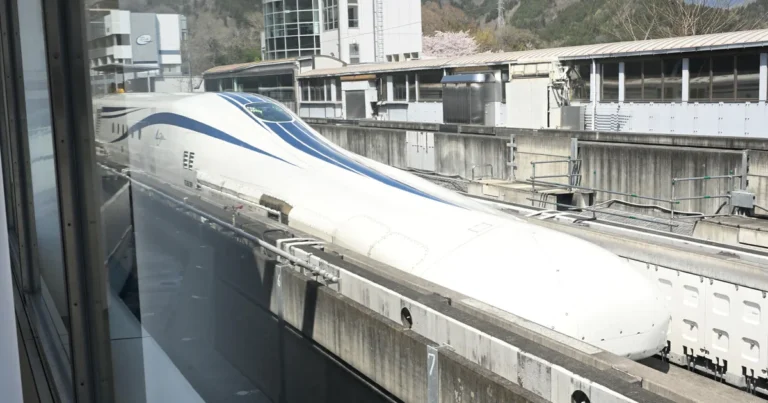Maryland Governor Wes Moore has kicked off his first international trade and investment mission with a high-speed step into the future. During a visit to Ogatayama, Japan, Moore experienced the Maglev—a next-generation train that floats above the tracks using powerful magnetic fields.
In a Saturday morning briefing with Japanese officials, Moore joined leaders from both countries to explore how advanced transportation technology like Maglev could benefit Maryland’s economy, environment, and infrastructure.
Magnetic Trains Could Reshape U.S. Travel
The Maglev (Magnetic Levitation) train uses magnets to lift and propel carriages without touching the tracks. This frictionless system allows for smoother, quieter, and much faster rides. Some models of the Maglev are capable of reaching speeds up to 370 miles per hour, according to a statement from the Mayor’s Office.
That speed could allow travel from Baltimore to New York in just one hour, or a quick 15-minute ride from Washington, D.C., to Baltimore—a dramatic upgrade from current transit options.
“Strong public transportation infrastructure is key to connecting Marylanders from where they live to where opportunity lies,” Gov. Moore said. “We are thrilled to experience this incredible technology in person and excited to explore its potential in Maryland.”
Economic Promise: Jobs, Growth, and Green Benefits
The Maglev isn’t just fast—it could fuel economic growth Maryland in a state struggling with budget challenges. Maryland is currently facing a $2.7 billion deficit for the fiscal year starting July 1, 2025.
Experts believe investing in high-speed rail could be part of the solution.
“With the potential to create over 160,000 jobs, reduce car traffic, and lower air emissions, the Maglev train would place Baltimore square in the center of the dynamic Northeast Corridor,” said Wayne Rogers, Chair of the Northeast Maglev.
This could provide much-needed stimulus in Maryland, where economic growth has been slow for nearly a decade.
Moore’s Vision: Leading in Quantum Technology
Governor Moore’s push for advanced infrastructure aligns with his broader vision of Maryland as a hub for quantum information science and technology.
Back in January, Moore revealed a plan to make Maryland a global leader in quantum research, an emerging field that powers innovations like the Maglev.
“Quantum has the potential to transform every part of our economy and society—from national security to health care,” Moore said.
So, what exactly is quantum computing? Simply put, it’s a powerful form of computing that uses the principles of quantum physics—studying how tiny particles like atoms and light behave—to solve problems too complex for today’s fastest computers.
A 2023 CBS 60 Minutes report explained that quantum computing could revolutionize industries by cracking codes, simulating molecules for new medicines, and making global logistics faster and smarter.
What’s Next for Maryland?
Governor Moore’s visit to Japan signals more than curiosity—it points to real interest in bringing this high-speed rail to the United States. While no deals have been finalized, early conversations suggest Maryland could become a testing ground for the world’s most advanced transportation systems.
If successful, this effort would put Maryland at the forefront of the next wave in global infrastructure and technological leadership.







